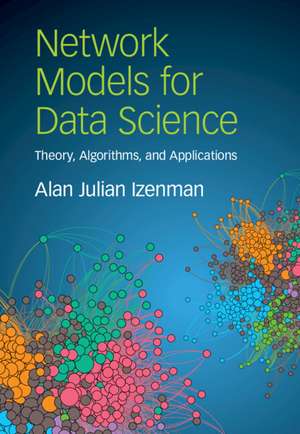Network Models for Data Science: Theory, Algorithms, and Applications
Autor Alan Julian Izenmanen Limba Engleză Hardback – 4 ian 2023
Preț: 466.96 lei
Preț vechi: 524.67 lei
-11% Nou
Puncte Express: 700
Preț estimativ în valută:
89.36€ • 95.55$ • 74.50£
89.36€ • 95.55$ • 74.50£
Carte disponibilă
Livrare economică 28 martie-11 aprilie
Preluare comenzi: 021 569.72.76
Specificații
ISBN-13: 9781108835763
ISBN-10: 1108835767
Pagini: 550
Dimensiuni: 185 x 259 x 28 mm
Greutate: 1.16 kg
Ediția:Nouă
Editura: Cambridge University Press
Colecția Cambridge University Press
Locul publicării:New York, United States
ISBN-10: 1108835767
Pagini: 550
Dimensiuni: 185 x 259 x 28 mm
Greutate: 1.16 kg
Ediția:Nouă
Editura: Cambridge University Press
Colecția Cambridge University Press
Locul publicării:New York, United States
Cuprins
Preface; 1. Introduction and preview; 2. Examples of networks; 3. Graphs and networks; 4. Random graph models; 5. Percolation on Zd; 6. Percolation beyond Zd; 7. The topology of networks; 8. Models of network evolution and growth; 9. Network sampling; 10. Parametric network models; 11. Graph partitioning: i. graph cuts; 12. Graph partitioning: ii. community detection; 13. Graph partitioning: iii. spectral clustering; 14. Graph partitioning: iv. overlapping communities; 15. Examining network properties; 16. Graphons as limits of networks; 17. Dynamic networks; Index of examples; Author index; Subject index.
Notă biografică
Descriere
This is the first book to describe modern methods for analyzing complex networks arising from a wide range of disciplines.
